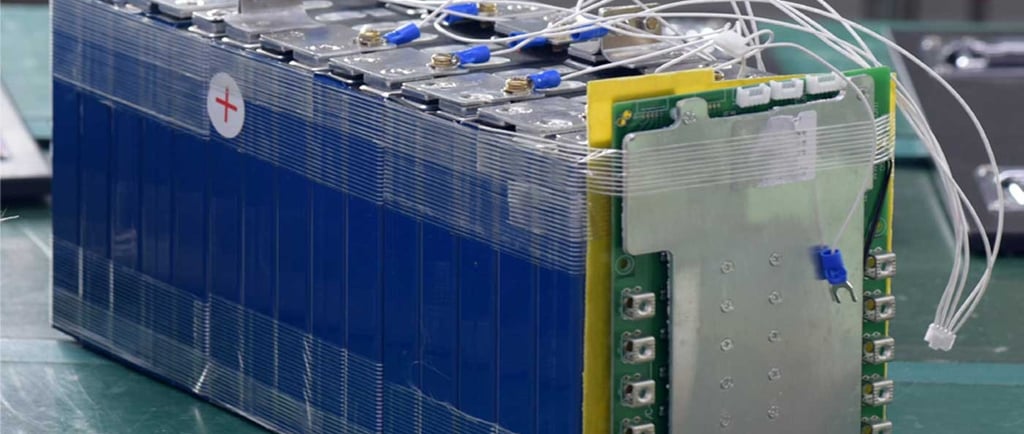Uncovering Silica Sand’s Role in Next-Gen Battery Technology
From Raw Material to Energy Innovation


Indirect and Emerging Roles of Silica Sand in Battery Technology
Although silica sand (SiO₂) is not used directly in conventional LFP battery production, it plays a growing role in broader battery innovation through the following avenues:
1. Silicon Anode Research
The Silicon Advantage: Silicon—derived from silica sand—offers a theoretical lithium-ion capacity nearly 10 times higher than graphite. Researchers are actively exploring silicon-carbon composites to increase energy density in next-generation batteries. Current Challenges: Silicon undergoes significant volumetric expansion during charging, leading to structural instability. This limits its immediate application in current LFP designs, though hybrid approaches are under development.
2. High-Purity Quartz in Manufacturing
Crucibles and Equipment: Ultra-pure quartz, a refined form of silica, is essential in producing crucibles and tools for high-temperature material processing, including semiconductor and battery component manufacturing. While not part of LFP chemistry itself, this underscores silica’s importance in the broader battery supply chain.
3. Nano-Silica Additives
Material Enhancements: Nano-silica particles, synthesized from silica sand, are being tested in advanced electrolytes and separators to boost thermal stability and ionic conductivity. While still rare in LFP systems, these innovations are gaining momentum in emerging battery chemistries such as lithium-sulfur and solid-state batteries.
Why Silica Sand Isn’t Used in Standard LFP Batteries
Material Compatibility: LFP battery chemistry is optimized around iron and phosphate for maximum safety, thermal stability, and cost-effectiveness. Incorporating silica or silicon introduces unnecessary complexity without proven benefits for this specific system.
Graphite’s Proven Performance: Graphite remains the preferred anode material due to its stability, affordability, and seamless compatibility with LFP cathodes.
Future Innovations: Where Silica Sand Could Shine
1. Silicon-LFP Hybrid Batteries
Researchers are exploring hybrid battery designs that combine LFP cathodes with silicon-rich anodes. These systems aim to harness the high energy density of silica-derived silicon while preserving the safety and stability of LFP chemistry.
2. Sustainable Silicon Production
With growing demand for silicon in advanced batteries, sustainably sourced silica sand is becoming increasingly important. Purnomo Silica offers high-purity silica ideal for environmentally friendly silicon extraction and processing.
3. Advanced Manufacturing Applications
Silica sand may also contribute to the production of specialized equipment—such as high-temperature furnaces and crucibles—used in the fabrication of battery components and semiconductor materials.
Purnomo Silica’s Role in Battery Advancements
Although silica sand is not a component in current LFP battery designs, Purnomo Silica is well-positioned to support future innovations in energy storage through:
High-Purity Sand: Our SiO₂ sand (≥99.5% purity) is ideal for silicon research, nano-silica development, and advanced battery material synthesis.
Sustainable Sourcing: Responsibly mined with a focus on environmental stewardship and minimal ecological impact.
Technical Collaboration: Actively partnering with researchers and manufacturers to explore and refine silica-based materials for next-generation battery technologies.
Conclusion
While silica sand is not a component of traditional LFP batteries, its potential in next-generation energy storage is increasingly significant. From silicon-based anodes to sustainable manufacturing processes, silica-derived materials are poised to enhance battery performance, efficiency, and environmental responsibility.
At Purnomo Silica, we are proud to support this transition by supplying high-purity, responsibly sourced silica sand for advanced research and innovation. As the future of energy storage continues to evolve, we remain committed to powering progress—one grain at a time.
The Role of Silica Sand in LFP Batteries
Lithium Iron Phosphate (LFP) batteries have become a cornerstone of modern energy storage, valued for their safety, thermal stability, and cost-effectiveness. While these batteries primarily rely on well-established materials such as lithium iron phosphate and graphite, growing interest surrounds the potential role of silica sand in their production. This article explores the relationship between silica sand and LFP batteries, examines current applications, and highlights how Purnomo Silica is strategically positioned to support future innovations in battery technology.
Understanding LFP Battery Components
Lithium Iron Phosphate (LFP) batteries consist of four primary components:
Cathode – Lithium Iron Phosphate (LiFePO₄): Known for its thermal stability, safety, and long cycle life.
Anode – Graphite (carbon-based): Stores lithium ions during the charging process.
Electrolyte – Lithium salt solution: Enables the movement of lithium ions between the cathode and anode.
Separator – Porous membrane: Prevents direct contact between the cathode and anode, reducing the risk of short circuits.
